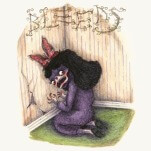The Booky Man: Neil Gaiman, Comicus Maximus
I remember a day. I used to run with a dollar bill up to Mr. Branton’s store in Dothan, Alabama, back in a pure and innocent time. I was in a hurry to buy the latest comics the first of every month. Doctor Strange. Captain America. The Incredible Hulk. Enemy Ace. At 12 cents each, I could buy eight of them … and I would read The Fantastic Four, my favorite, cover-to-cover before I got home.
Who knew it was such an insidious and corrupting medium? I say this because in the years between WWII and the advent of the anti-hero—James Dean and Elvis and Jackson Pollock and Bird and all those rebels with a cause—a great scare went across America over the comic book. In the mid-1950s, comics may have been America’s most popular entertainment … and their garish and outrageous content appealed specially to teens—the gawky, suggestible, space aliens of our species.
The lurid comic titles produced by publishers like William Gaines at EC comics, the man who later launched MAD magazine, drove conservative America crazy. Shepherds scrambled to protect their flocks. We had comic book burnings, angry sermons from ministers, speeches from self-righteous pre-McCarthyite politicos and, in general, the first manifestations of what would twenty years later come to be known as The Generation Gap.
All this is to say that in some strange way, comic books have often been the burning spear point of our culture. Comics pioneered, took chances. Comics tested themes and introduced heroes that infused the rest of our culture like the garlic in a stew. (To my own taste, you can never have too much garlic.)
So it is now, today. In the world of comics—I include here the graphic novel, those comics on steroids—it’s a new golden age, a time when the influence of the medium is as strong as it’s ever been. Look at the last two decades’ most popular movies—Avatar, Spider Man, Iron Man, Batman, Superman, X-Men. Comics brought to cinema, all. Look at the art—both Andy Warhol’s soup can and the pop art of Roy Liechtenstein had comic DNA. In these days of time famine and visual obsession, the quick-read graphic novel and Japanese-influenced manga are as hot as anything in our book stores. And the medium is making a cultural imprint. Look at Persepolis. Look at Maus. Check out the brilliant work of the Hernandez Brothers.
But the rock star of the comic world remains a Brit who lives in Minnesota. His name is Neil Gaiman. He has the Midas touch.
-

-

-

-

-

-

-

-

-

-

-

-

-

-

-

-

-

-

-

-

-

-

-

-

-

-

-

-

-

-

-

-

-

-

-

-

-

-

-

-








































